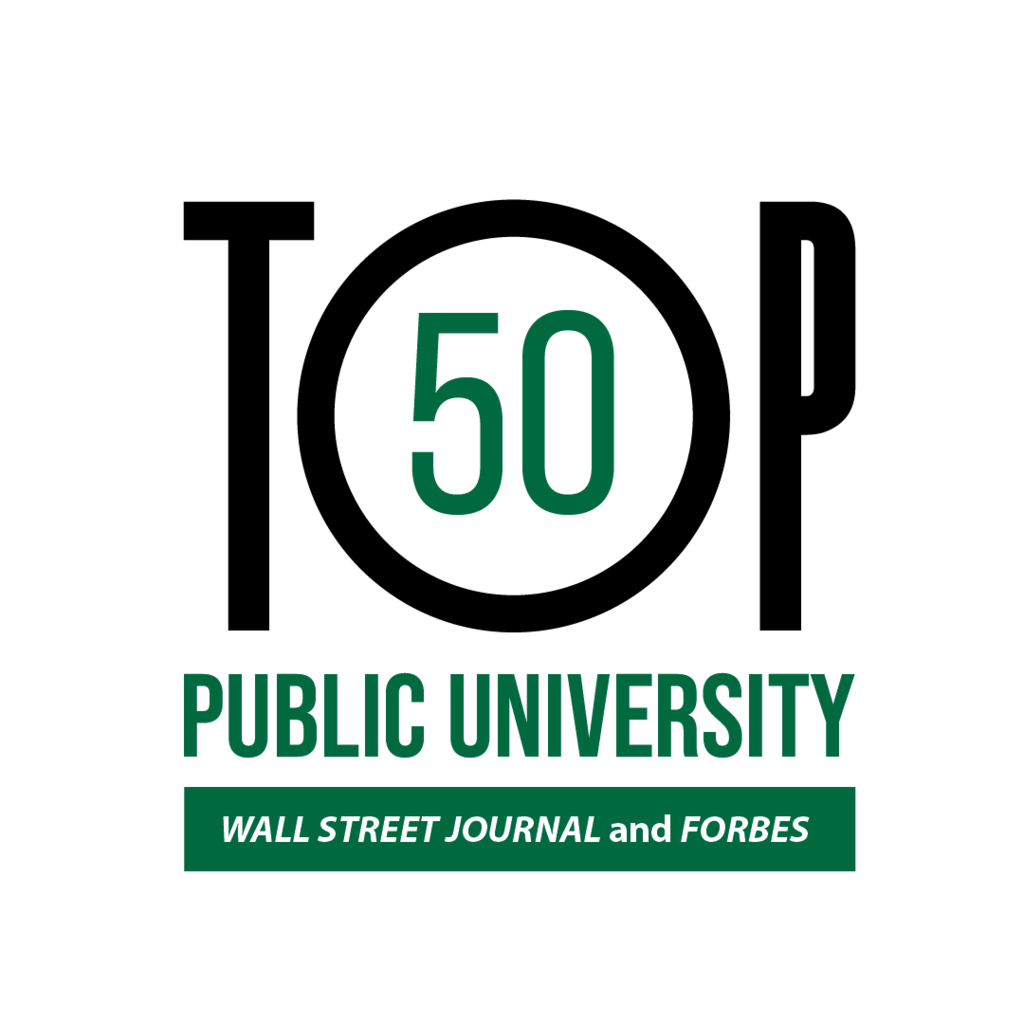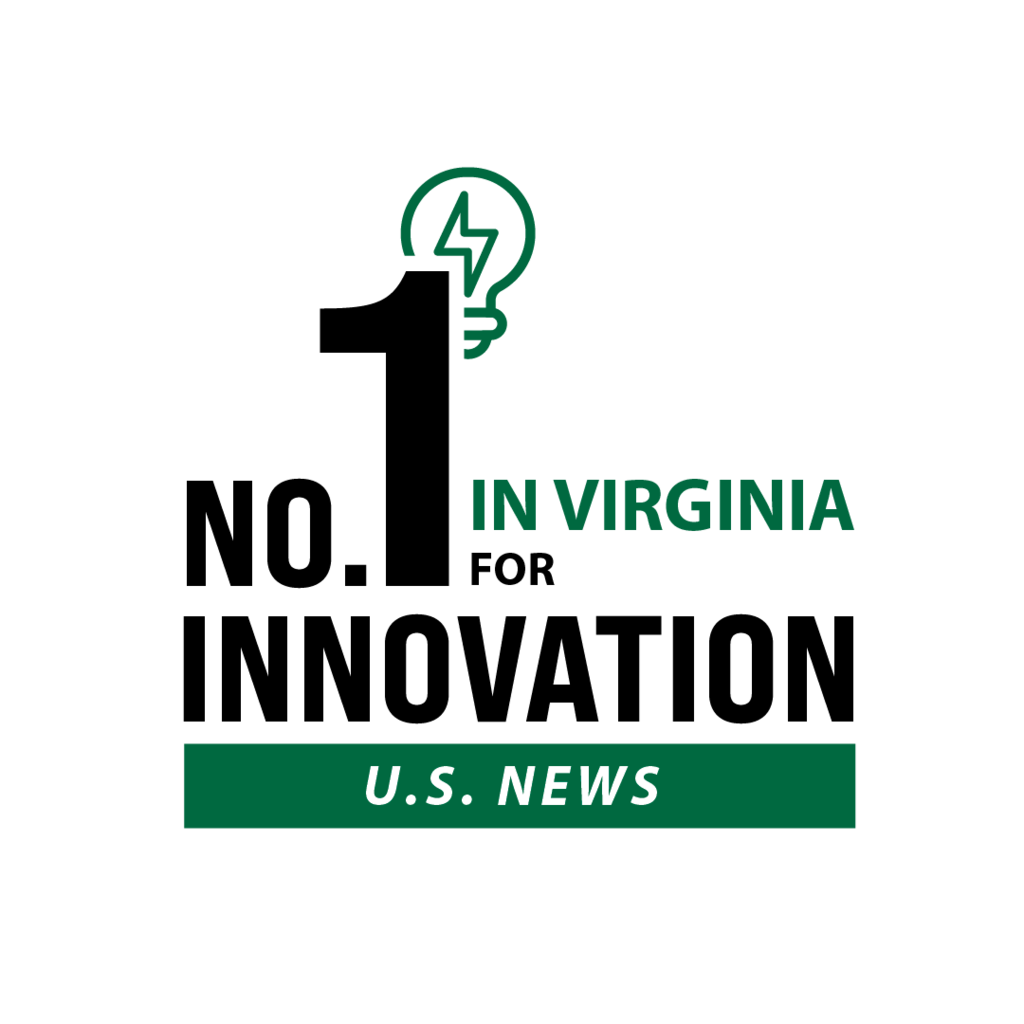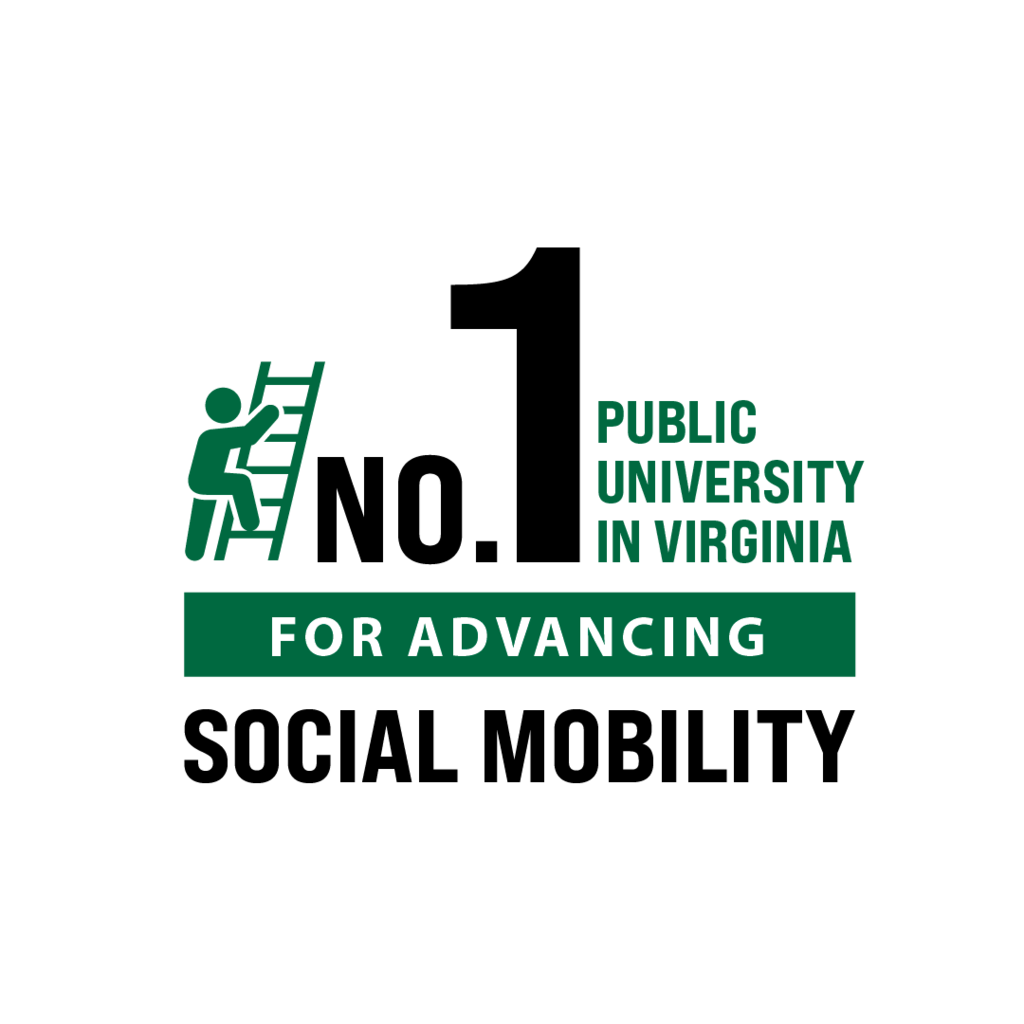
"Truth and hope: We want to find the scientific truth. And then we want to use that to provide hope."
—Lance Liotta
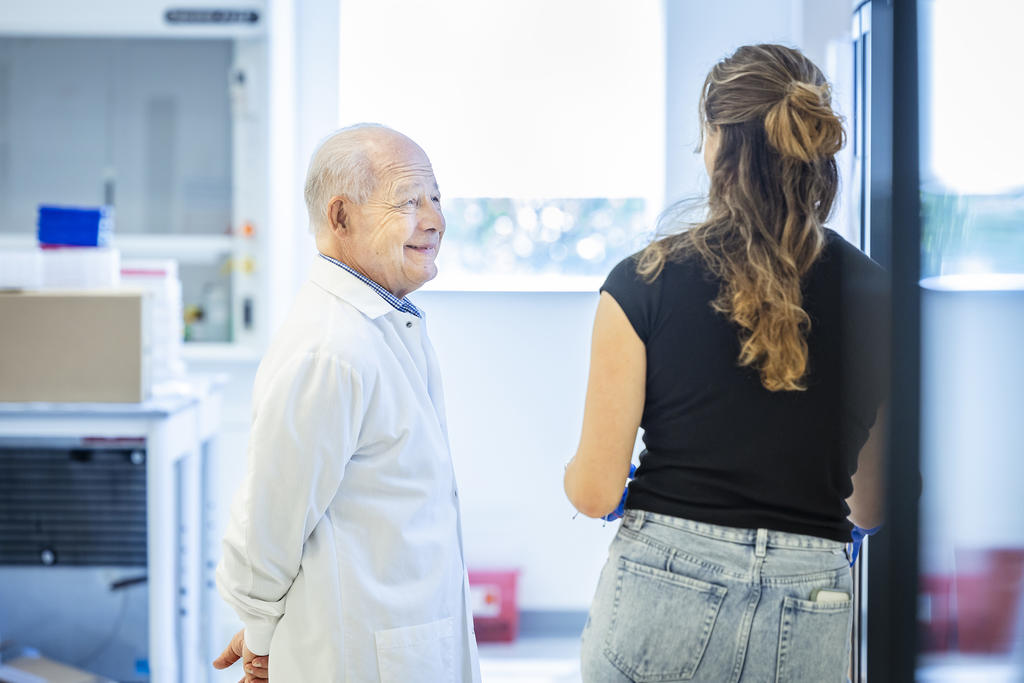
Lance Liotta, cofounder and codirector of Mason’s Center for Applied Proteomics and Molecular Medicine interacts with a student. Photo by Ron Aira, George Mason University
The Inventor
Mason Professor Lance Liotta has worked on more than 100 inventions to date and has filed more than 120 patent disclosures—a public claim about an invention or discovery and the first step toward applying for a patent. One of his prototypes is in the Smithsonian Institution’s collection. Liotta’s ideas are so plentiful, he recently received Mason's Lifetime Prolific Disclosure Award at the university’s annual Innovations Awards ceremony. The cofounder and codirector of Mason’s Center for Applied Proteomics and Molecular Medicine (CAPMM), Liotta credits his success to his ability to foster “impossible things” and make them a reality.
Making the impossible, possible
Liotta, a board-certified physician, was working at the National Institutes of Health when Mason approached him in 2005 with a proposal. “One of our charges was to invent new technology that can be used to discover mechanisms of disease but also to develop new treatments and to test patients,” Liotta said during a joint interview with his CAPMM colleague Virginia Espina on an episode of President Gregory Washington’s Access to Excellence podcast. “Our job was to discover diagnostic and mechanistic disease functional studies and bring those over to help the patient. Mason supported us in that.”
The support wasn’t just verbal. CAPMM’s facilities were built specifically to enable Liotta and a team of Mason researchers—which includes faculty, research scientists, medical technologists, and graduate and undergraduate students—to do this work at the highest of standards. CAPMM’s CAP/CLIA Compliant Clinical Proteomics laboratory was the first in the United States to be dedicated solely to translational proteomics research, and it’s additionally accredited by both the College of American Pathologists (CAP) and the Clinical Laboratory Improvement Amendments (CLIA). It’s a distinction that sets Mason apart, as Liotta explains. “This means that the clinical lab meets and exceeds the most stringent government and industry standards for medical testing—the same that you would see in a hospital diagnostic lab or any of the big diagnostic labs.” That ability to perform testing at the highest level of quality and volume means Mason is able to do what many universities cannot.
CAPMM, housed at Mason’s Science and Technology Campus in Prince William County, is just one example of the university’s intentional commitment to fostering breakthroughs in research that can generate a necessary positive impact. President Washington has noted that “Our investment in this is just a recognition of the overall value that [CAPMM] can bring to solving these problems.”
“Mason scientists have been leaders in helping to prevent long-term illness and disability from these diseases, which are becoming more common in Virginia and across the country.”
—Jennifer Wexton, Virginia’s 10th District
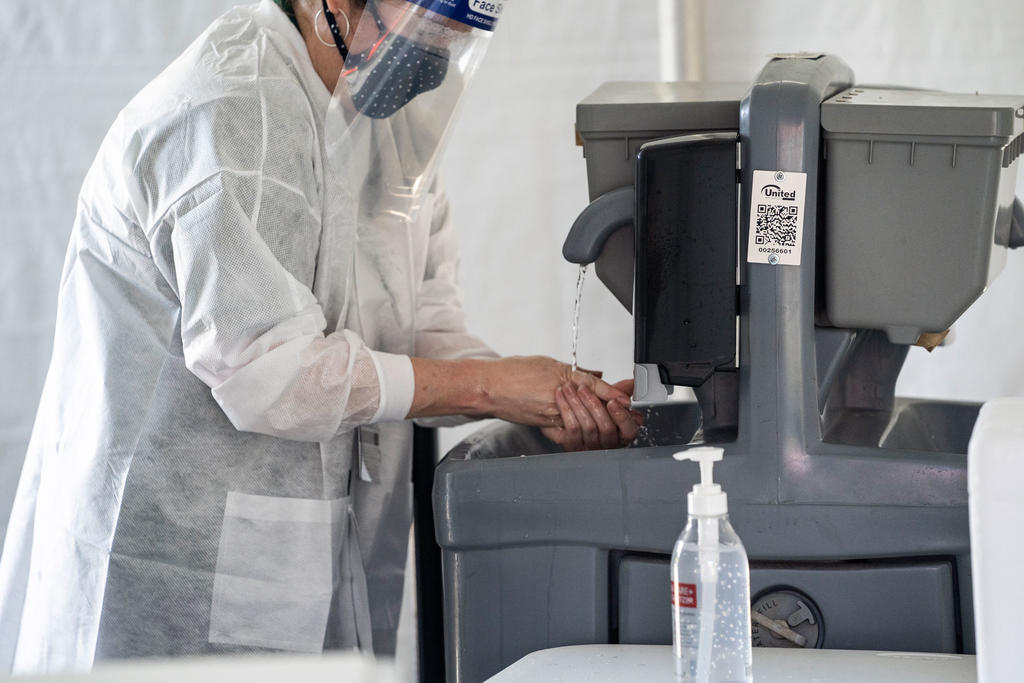
In 2020, Mason’s Center for Applied Proteomics and Molecular Medicine (CAPMM) and College of Education and Human Development (CEHD worked together to screen student-athletes preparing to return to campus. Photo by Evan Cantwell, George Mason University
On the front lines of COVID-19 and Lyme disease
While Liotta’s focus is primarily cancer research, he has recently been directly involved with CAPMM teams whose innovations have already made it to the wider public. Along with Virginia Espina, Liotta’s team created a saliva-based testing for COVID-19 and tested as many as 10,000 samples a week at the height of the pandemic. The test was heralded for being noninvasive and for generating test results quickly.
And with Mason professor Alessandra Luchini, Liotta was part of the team to create a new and rapid way to test for Lyme disease. Traditional testing is only effective four to six weeks after exposure, but this new, urine-based model generates results in real-time, which are then communicated to the requesting physician within 24 hours, enabling immediate initiation of appropriate therapy if pathogens are present. Like much of the research being done at Mason, the test addresses an urgent need and will have a profound positive impact, especially in Virginia, which is experiencing an increase in tick-borne illnesses.
“This is an important, direct test for tick pathogens that can be used not only for diagnostics, but also to monitor the success of treatment,” Liotta says. For those efforts, he, Luchini, and his team received $820,000 in earmarked congressional funds to launch the clinical deployment of diagnostic testing that will allow for a quicker and more efficient diagnosis.
The funding was championed by U.S. Representative Jennifer Wexton, who represents Virginia’s 10th District. “Mason scientists have been leaders in helping to prevent long-term illness and disability from these diseases, which are becoming more common in Virginia and across the country,” she says. “I'm grateful to Mason for their work on this issue.”
Making our communities healthier
Liotta’s accomplishments aren’t just a testament to his ability to foster “impossible things” and make them a reality alongside his collaborators at CAPMM. In 2023, he was ranked as one of the top 50 most highly cited scientists in the world for biology and biochemistry. The global reach of Liotta's work is a prime example of how Mason’s culture of tackling problems in singular ways can create measurable results. “It’s not just what we’re doing,” he says. “It’s what you’re doing and what the whole Mason community is doing.”
During the same annual Innovation Awards ceremony that garnered Liotta a Lifetime Prolific Disclosure Award, he also received recognition as being a member of several different teams that have successfully licensed their technologies to companies, a process that allows that intellectual property to be widely adopted. In the case of medical technologies like the innovations Liotta works on at Mason, licensing brings these processes one step closer to being available and used to benefit the health of the general human population.
Priyanka Champaneri, BA ‘05 and MFA ‘10, John Hollis, and Colleen Kearney Rich, MFA ’95, contributed to this story.
More Inspiring Stories
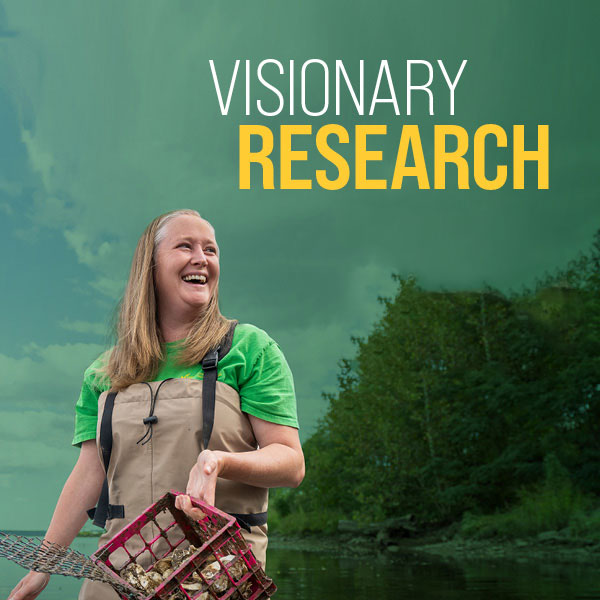
Amy Fowler's research team is learning about zombie crab invaders and how they impact the ecology of our region.
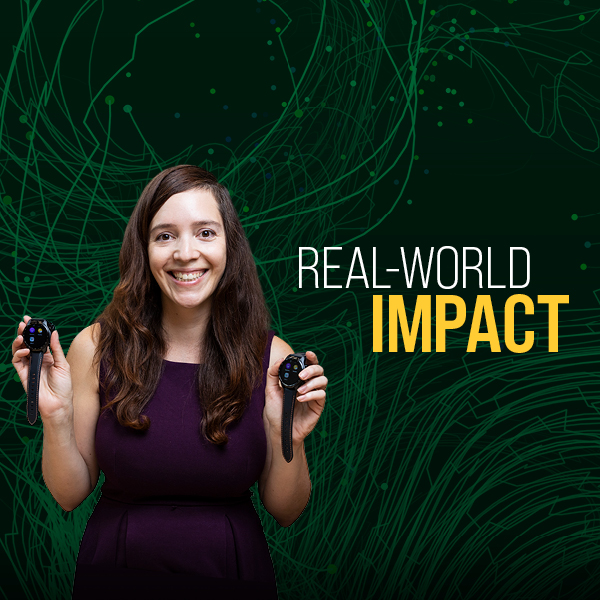
Researchers like Vivian Motti are utilizing smartwatches to help neurodiverse individuals.

J. P. Singh and a team of interdisciplinary researchers at Mason are working to create forecasting models for AI infrastructures.
Read more about Singh’s AI research.

